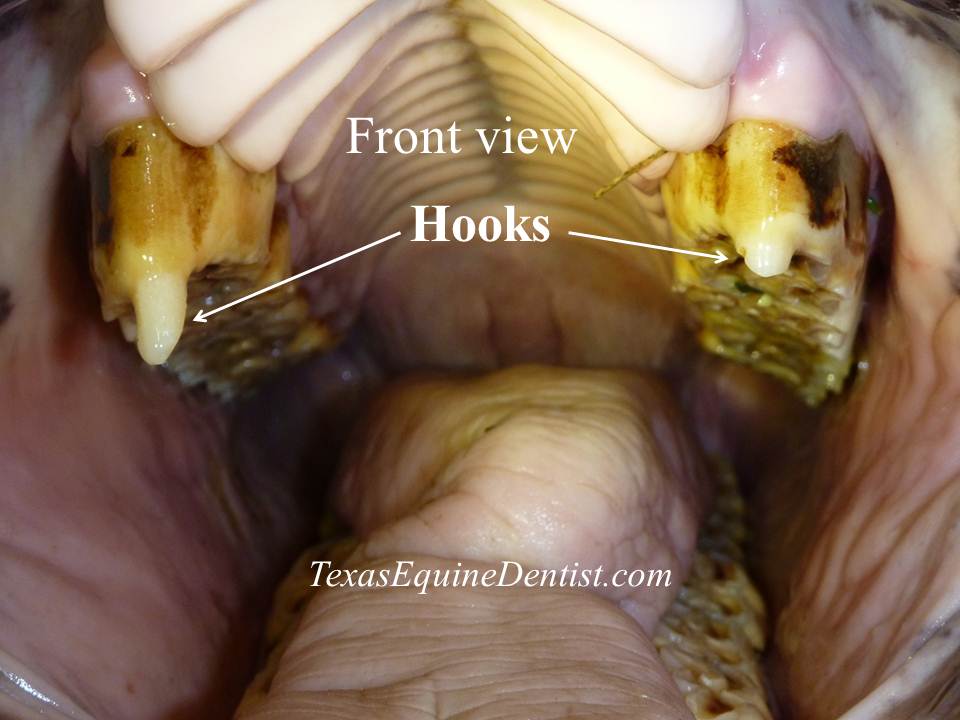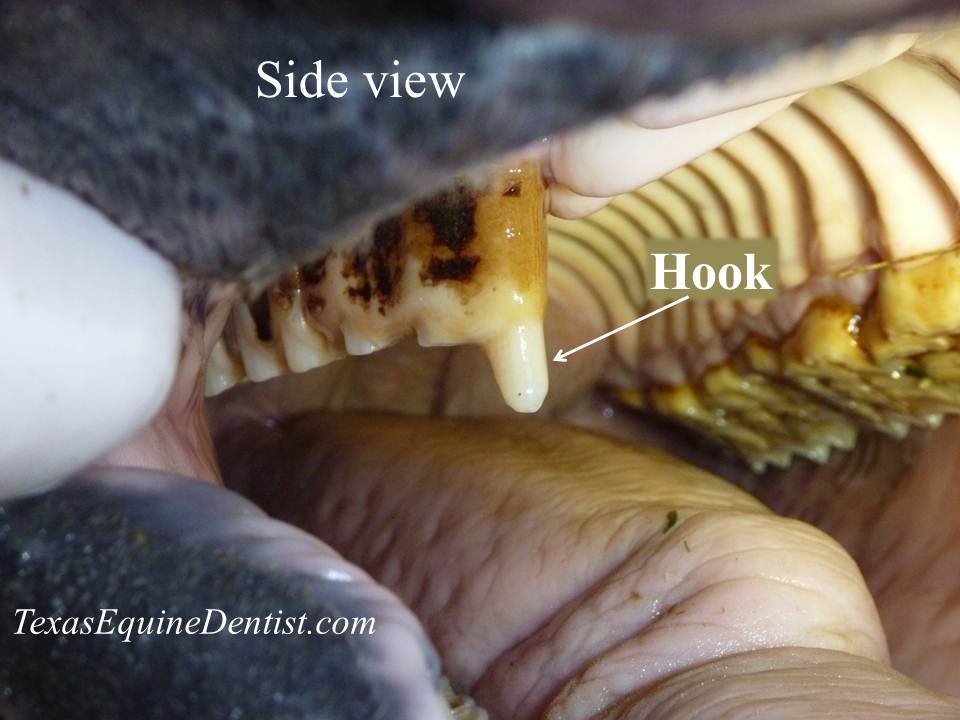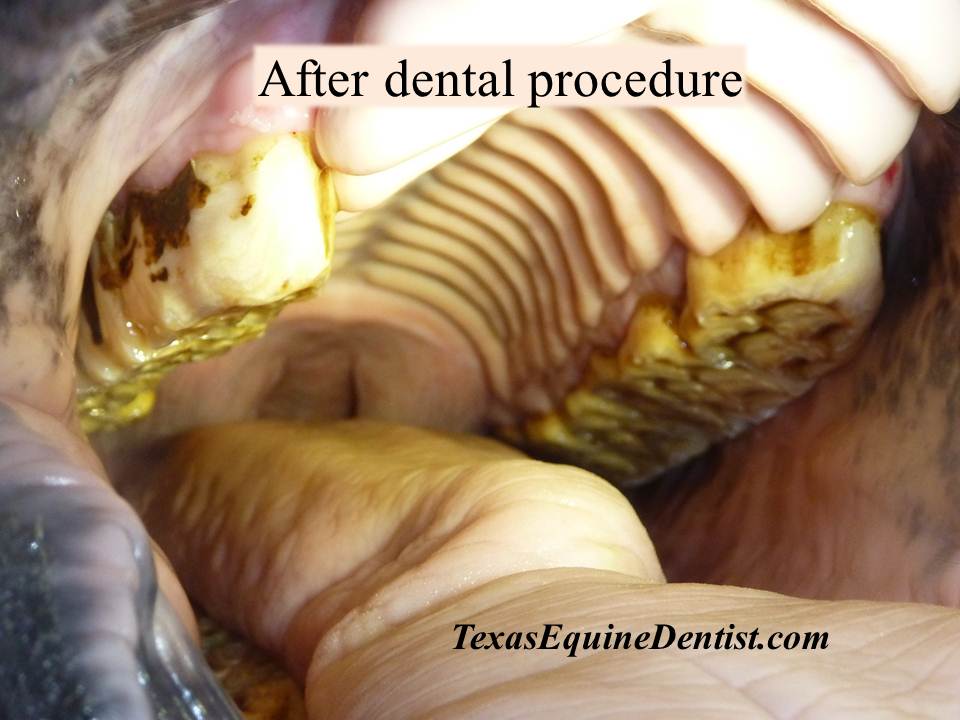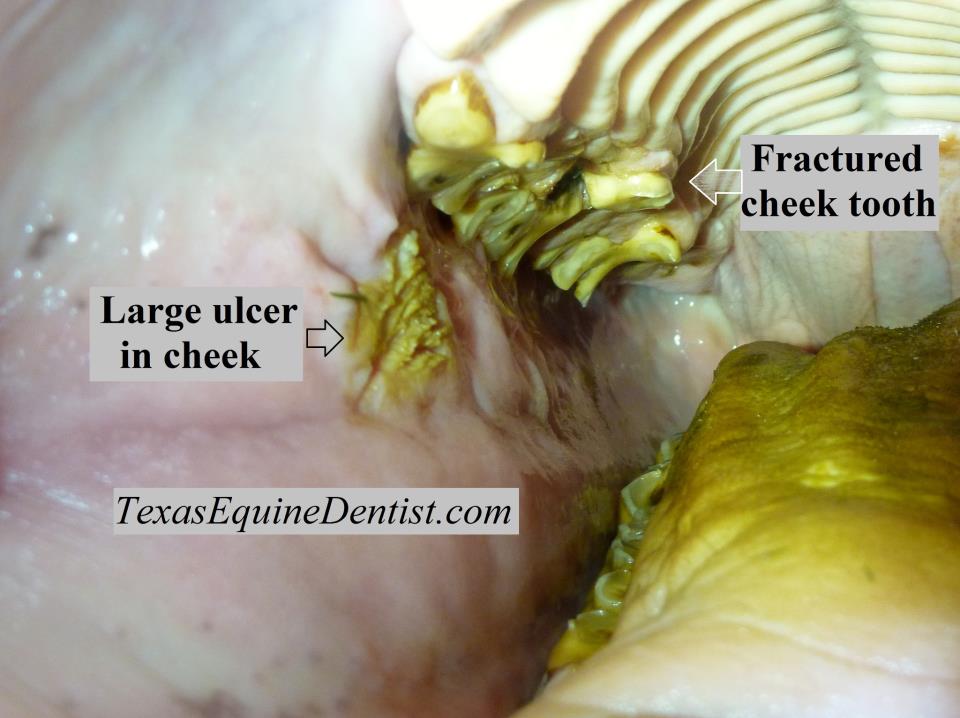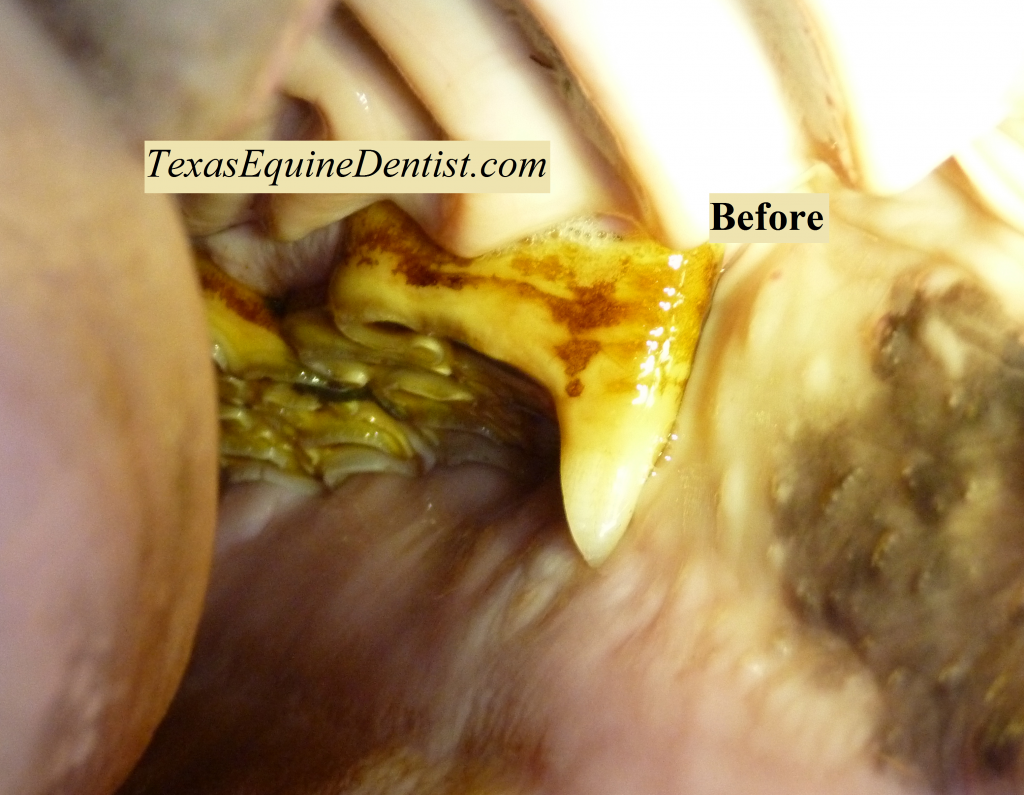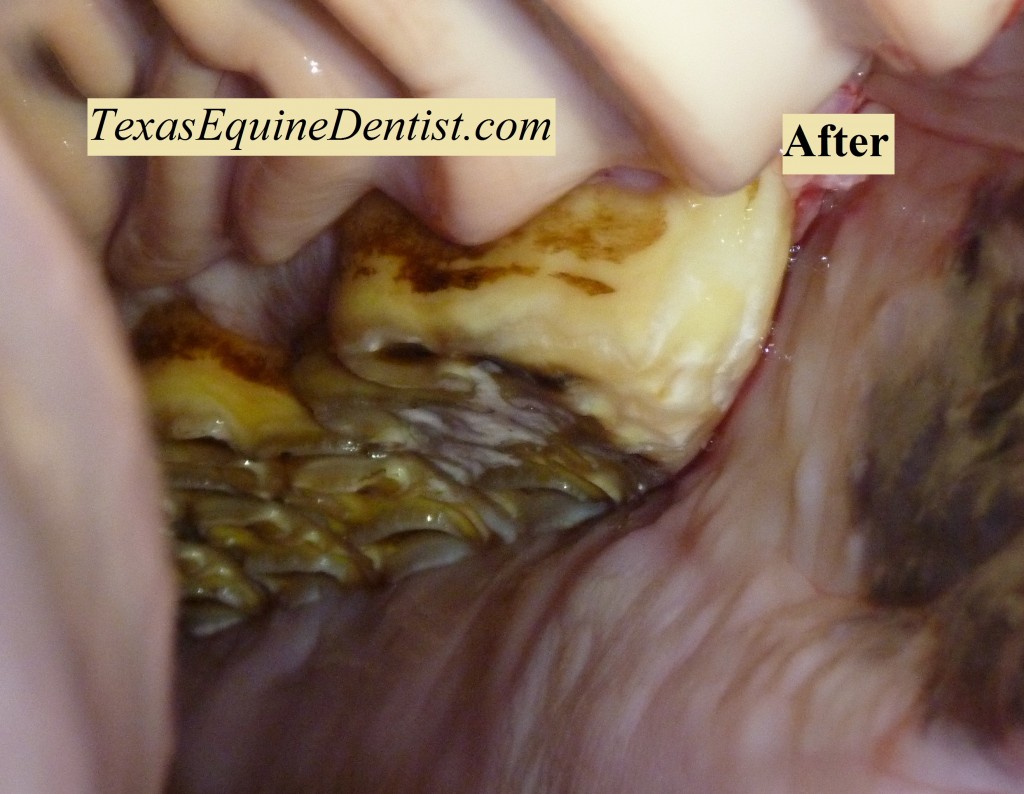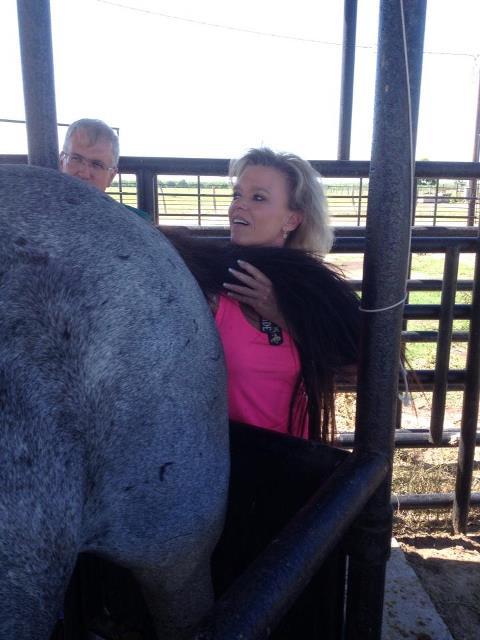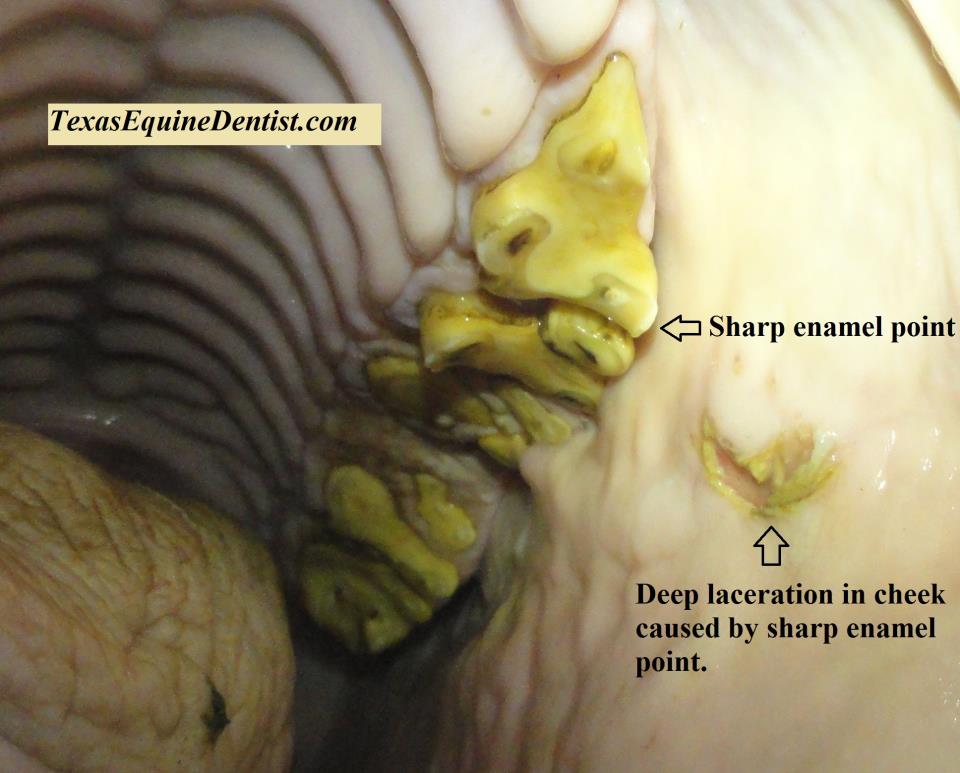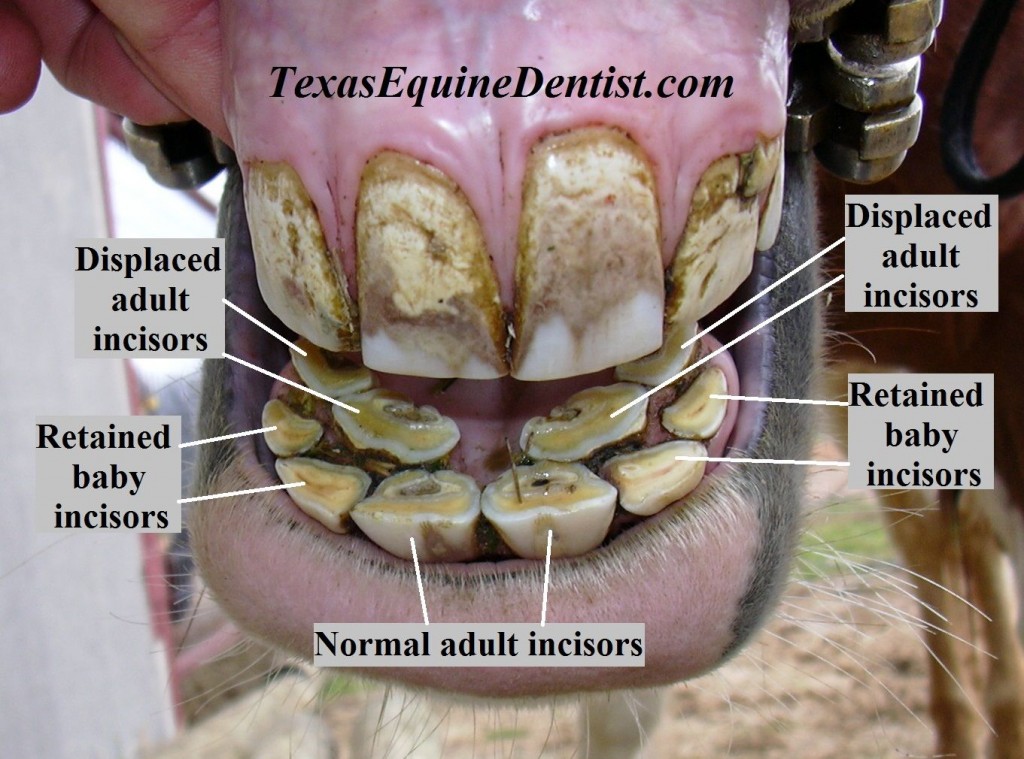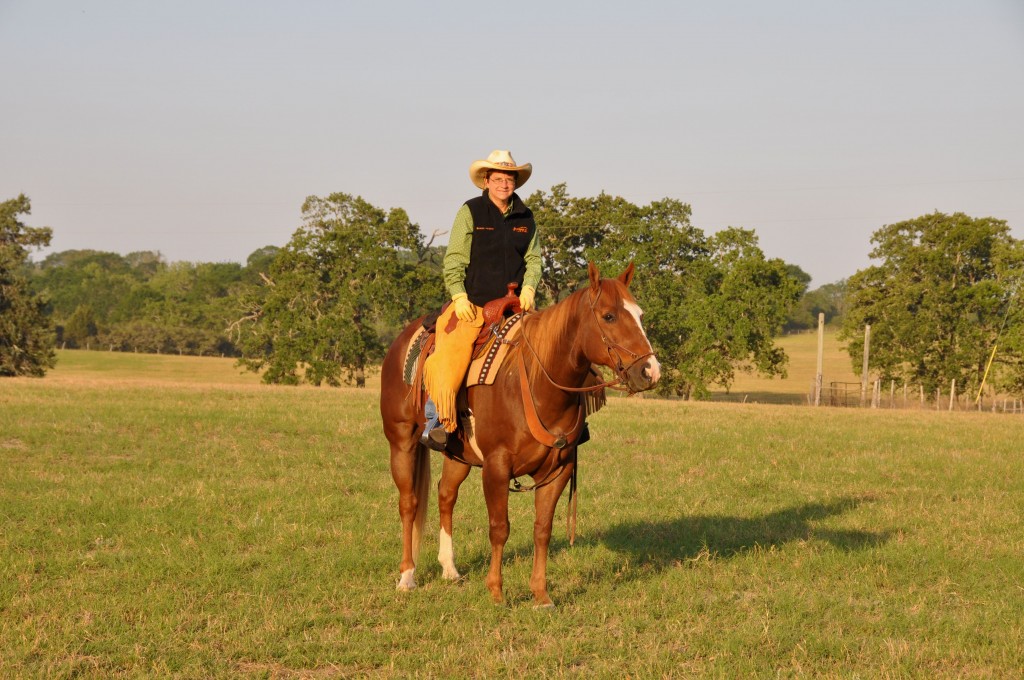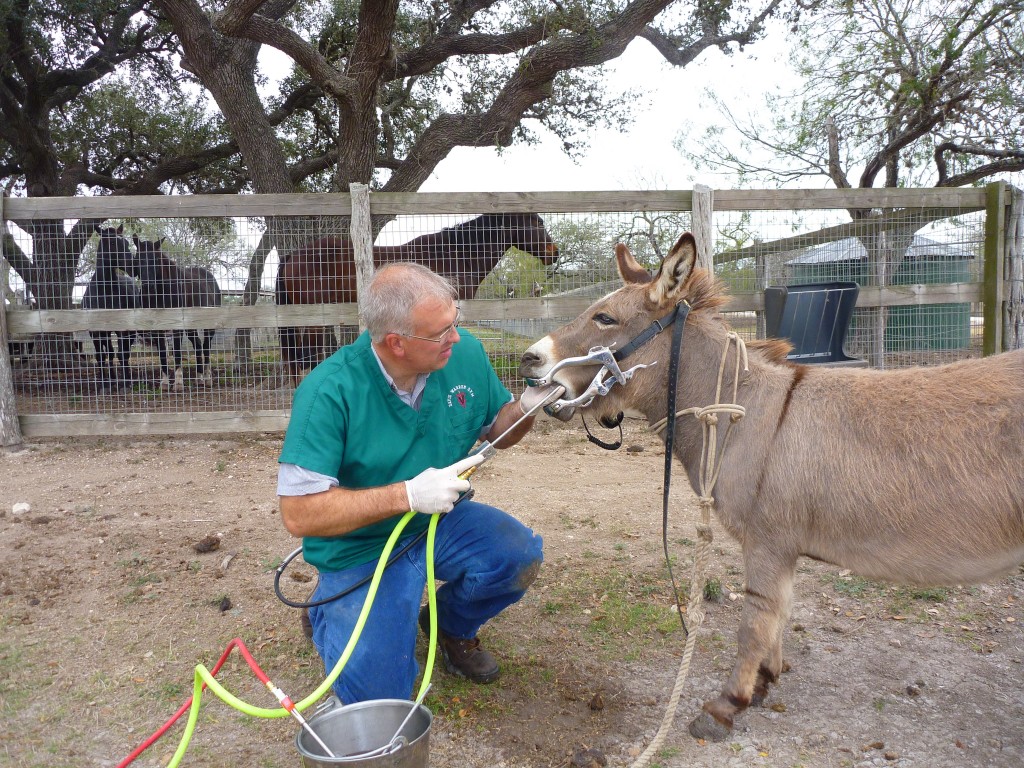Ulcerations and abrasions of the cheek are commonly found in healthy horses of all ages. These lesions range from small shallow superficial “scrapes” on the surface of the cheek to deep ulcers that become infected. The presence these ulcers result in a variety of symptoms including improper mastication, oral infections, and decreased athletic performance. Cheek ulcerations are found in all ages and breeds of horses but are more common in horses less than 10 years of age.
Sharp enamel points on the cheek teeth are the culprit. These points are located on the outside (cheek side) surface of the upper cheek teeth and the inside (tongue side) of the lower cheek teeth. They vary in size from small points only a few millimeters in length to larger hook like structures that are capable of digging into surrounding soft tissues.
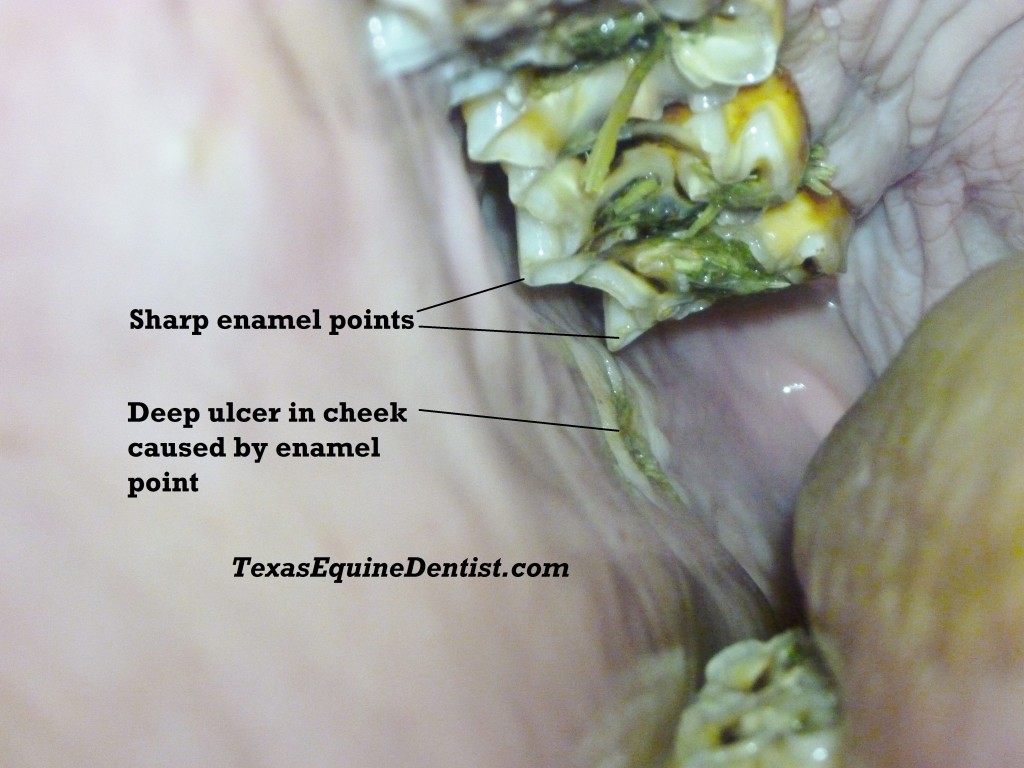
The sharp enamel points in the above photo are average in size. They are located on the last two upper cheek teeth and are very sharp. An ulcer has formed due to one of the enamel points cutting into the cheek during the chewing process. Once the enamel point is removed during the dental float, the ulcer will heal in 5-7 days.
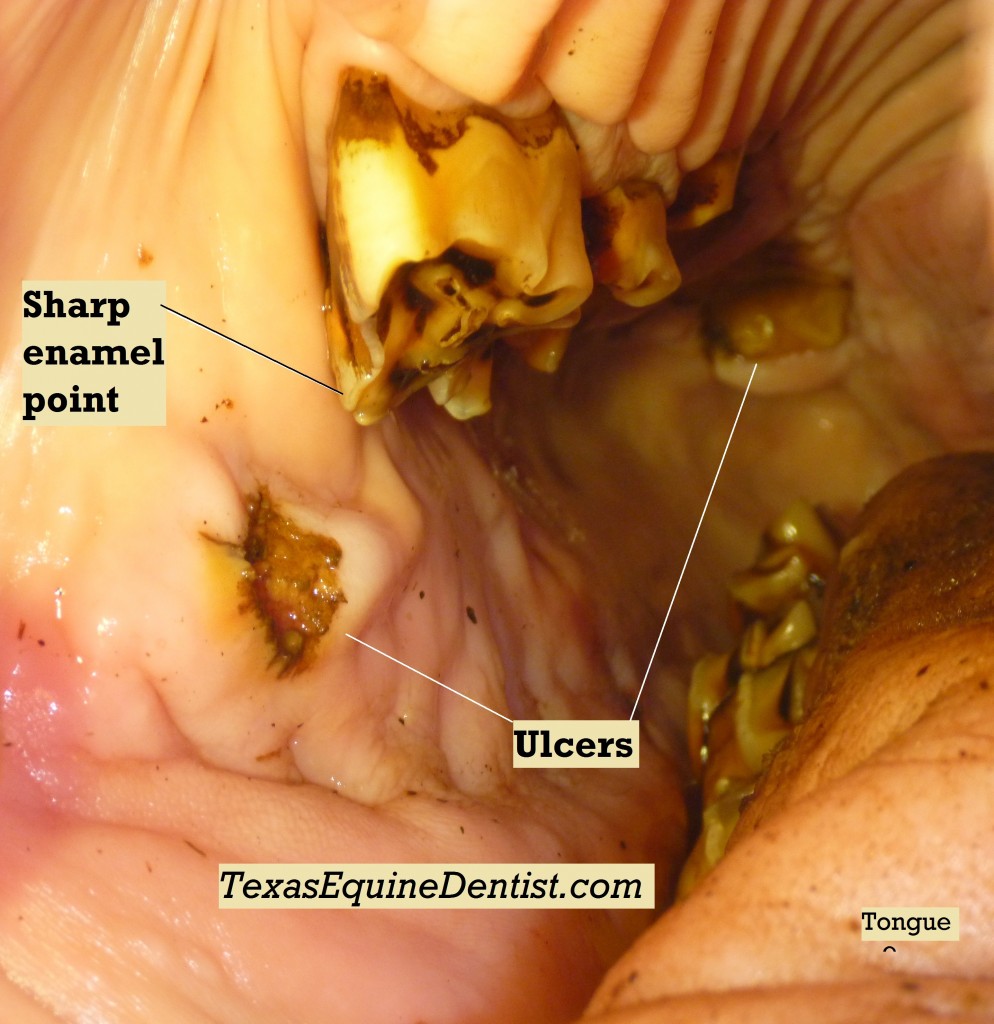
This is a photo of a 29 year old roping horse having difficulty chewing and was losing weight. The large deep ulcer in the cheek is due to the long enamel point on the first cheek tooth. There is another quarter size ulcer in the back top part of the mouth near the soft palate. These ulcers are very painful, making it difficult to chew grass and hay.
The primary goal of equine dentistry is to reduce pain – pain that interferes with mastication and performance. As you can see, ulceration of the cheeks and surrounding soft tissue must be addressed during dental floating and equilibration. The good news is that once the enamel points are removed, these ulcers will heal and the source of pain resolved.
David Warren, D.V.M.
.

